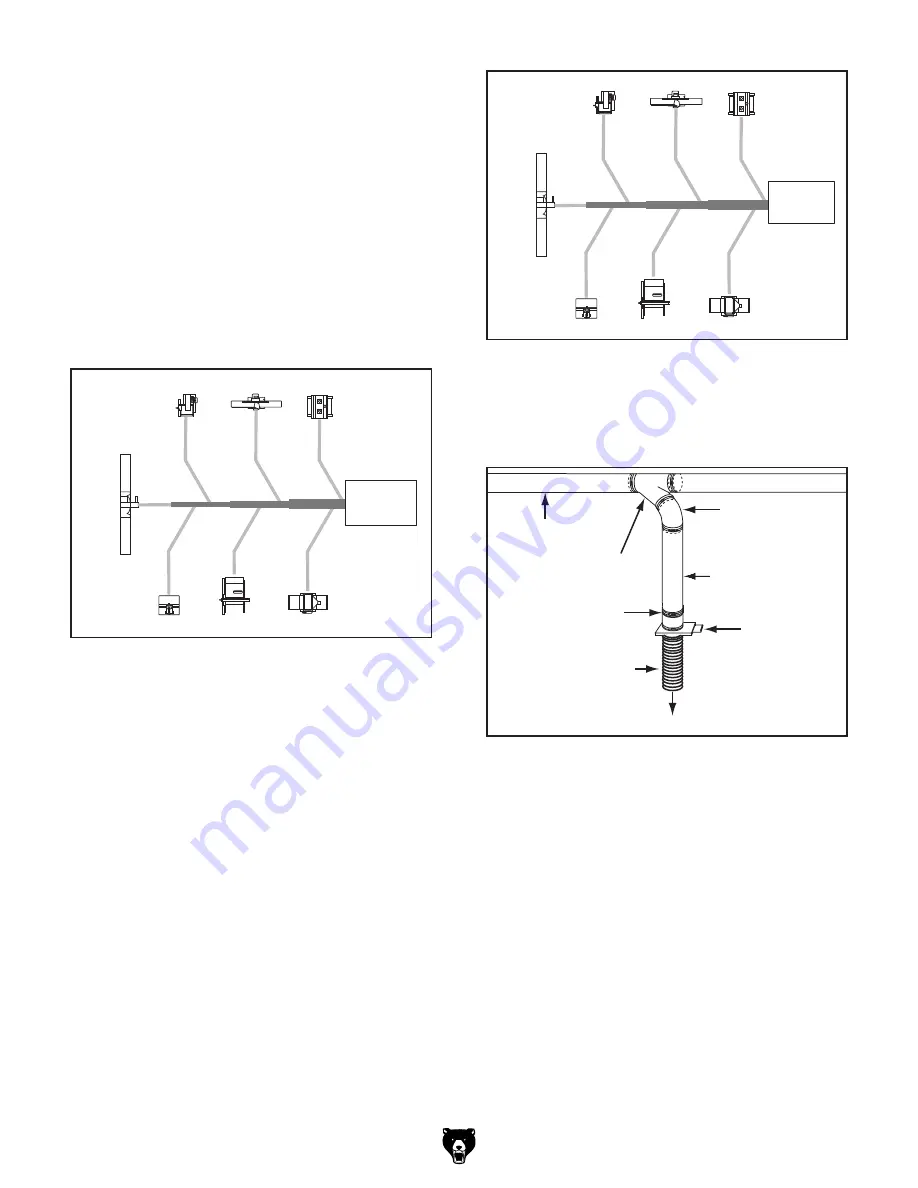
-28-
Model g0443 (Mfg. since 11/09)
Determining Main Line Duct Size
figure 41. Main line size labeled on sketch.
395
395
614
790
395
220
98
Dust
Collector
5"
6"
7"
Table Saw
Planer/
Moulder
Miter
Saw
Jointer
Sander
Planer
Shaper
figure 42. Branch line duct sizes labeled.
395
395
614
790
395
220
98
4"
4"
4"
6"
4"
4"
5"
5"
6"
7"
Table Saw
Miter
Saw
Jointer
Sander
Planer
Shaper
Planer/
Moulder
Dust
Collector
The general rule of thumb for a main line duct is
that the velocity of the airflow must not fall below
3500 FPM.
For small/medium sized shops, using the inlet size
of the dust collector as the main line duct size
will usually keep the air velocity above 3500 FPM
and, depending on your system, will allow you to
keep multiple branches open at one time.
Mark your drawing, as shown in the figure below,
but using the inlet size for your dust collector as
the main line.
the general rule of thumb for a branch line duct is
that the velocity of the airflow must not fall below
4000 FpM.
For small/medium sized shops, using the dust
port size from the machine as the branch line duct
size will achieve the correct velocity in most appli-
cations. however, if the dust port on the machine
is smaller than 4", make the branch line 4" and
neck the line down right before the dust port.
Note:
Systems with powerful dust collectors work
better if multiple blast gates are left open. This
also allows you to run two machines at once.
Experiment with different combinations of blast
gates open/closed to find the best results for your
system.
write your determined branch line sizes on your
drawing, as shown in the following
figure.
plan all the drop downs for each machine with
blast gates, as shown in the
figure below.
Determining branch Line Duct Size
To Planer
Blast Gate
Flex Pipe
Rigid Pipe
Rigid Pipe
(Main Line)
Elbow
Clamp
Y Branch
figure 43. drop down setup.
Drop Downs




































